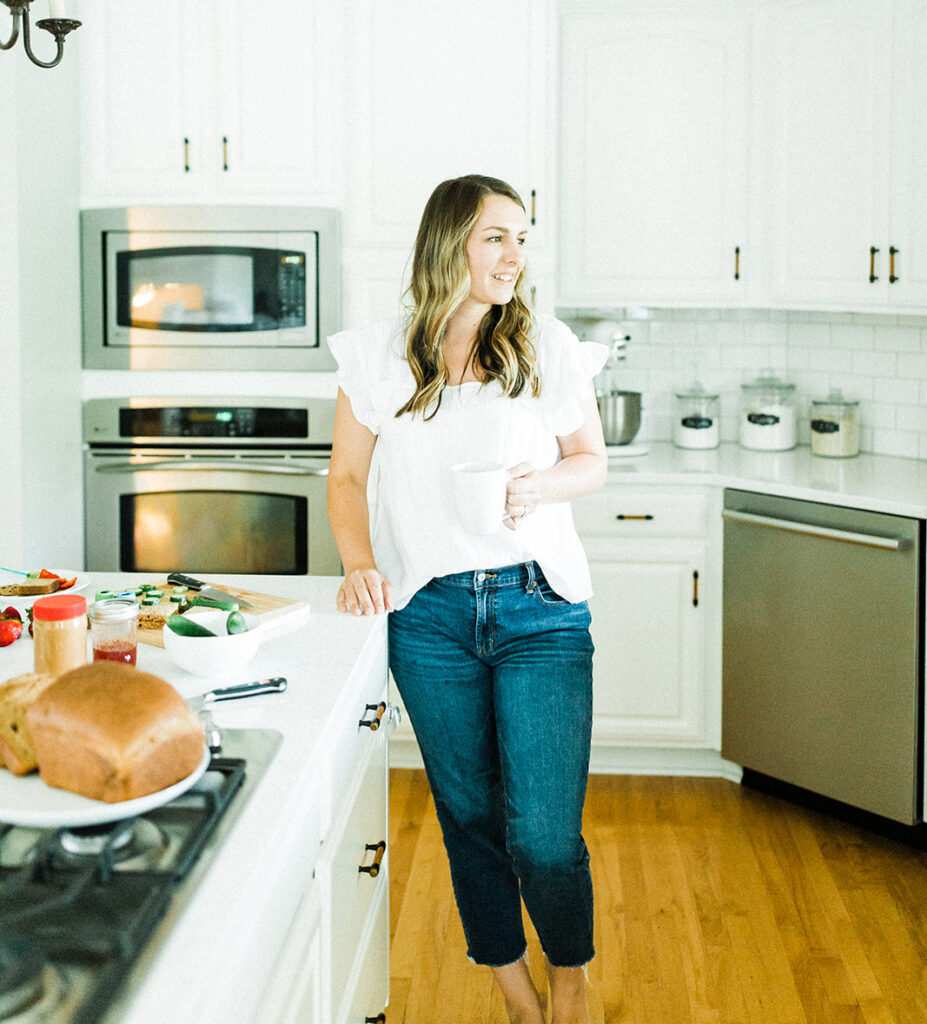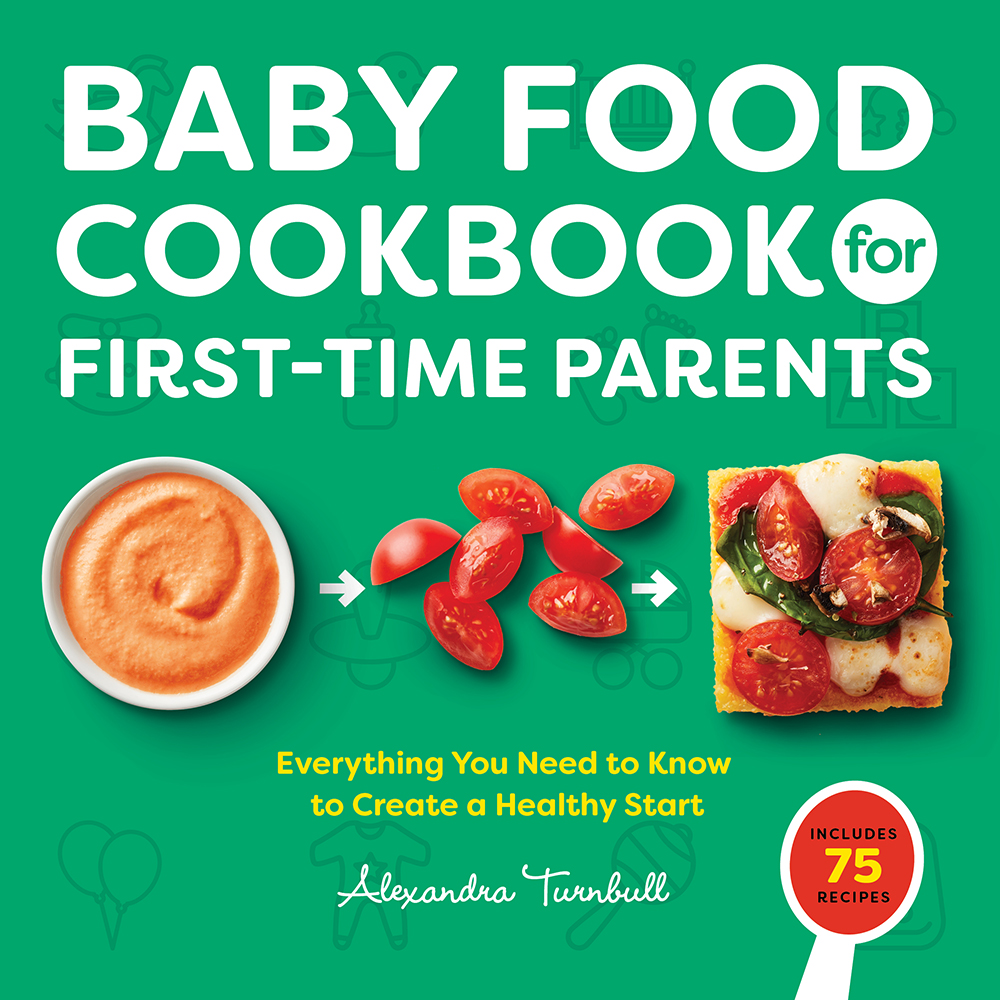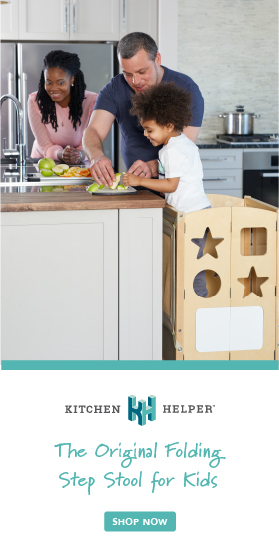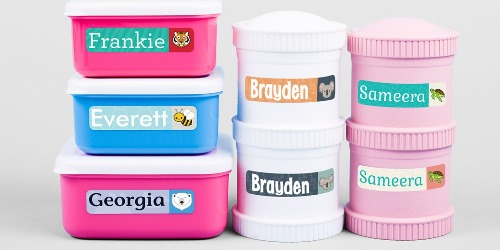This post may contain affiliate links.
According to Feeding America, 199 billion pounds of food in the United States is wasted every year! That turns out to be over $400 billion dollars and 40% of the total food supply is thrown in the trash.
I feel a little sick to my stomach reading those numbers. Especially because I’m not perfect when it comes to food waste, but I do work on trying to minimize it as best as possible in our house.
The food waste can quickly add up in your household, especially if you have a picky eater who frequently decides they don’t like what they loved yesterday.
I’m going to share with you 9 ways you can easily cut back on food waste as a family. I’ve implemented all of these strategies in our house and you can too.
Table of Contents
How Much Food Waste is Okay?
Let’s be honest for a second. It’s inevitable that you will have some food waste. There are just some parts of the food you buy, that you won’t or can’t eat, such as orange and banana peels, bones, burnt food, food that fell on the floor, etc.
Some might say you can even reuse all of those food items to dwindle down your food waste even more and you certainly can, but not at the expense of your sanity. Sometimes you have to put your hands up and say “I can’t do it all.”
There’s no specific amount of food waste that will earn you a prize. Instead, focus on reducing the amount of food waste you’re currently adding to the trash.
Ways to Reduce Food Waste as a Family
Remember, you’re not going to be perfect and prevent all food waste in your house. That’s just not going to happen. Instead, focus on implementing one or two of these strategies to start with and build onto them as you’re able.
1. Only Buy What You Need
This is probably my biggest issue. I just get so excited at the grocery store and want to buy all the beautiful fruits and veggies and try new products. What can I say, I’m a dietitian.
So instead of doing what I do (I’m working on it), try and stick to your list. That doesn’t mean you can’t buy a few things here or there that aren’t on your list, but don’t go too crazy.
2. Prep Produce
Now that you’re back from your grocery trip and you are stuck to your list (for the most part), try to carve out some time to wash, cut, and organize your fresh produce if you can.
It might seem like you’ll only be speeding up the ripening process by prepping your fresh produce, but you’re much more likely to eat washed and chopped celery, than the bag of celery that’s been hiding in your fridge drawer for the last two months. Been there.
Point is, you’re much more likely to eat food when it’s easier to eat. If you’re looking for a snack, but none of your fruit or veggies have been washed or cut up (that sounds like a lot of work), you’re way more likely to reach for the bag of chips that requires no prep.
Tips for prepping your produce:
- Wash all produce (except mushrooms and raspberries) and let air dry on a towel before storing.
- Use stackable, clear bins to maximize space and have a better visual of what you actually have in your fridge.
- Place paper towel on the bottom of containers for high moisture produce such as berries.
3. Store Food Properly
It’s true. There is a right and wrong way to store certain foods to maximize their shelf life.
Most fruits and vegetables store well in the fridge and the cool air can help slow down the ripening process.
However, some fruits and vegetables emit ethylene gas (bananas and apples). They are best kept away from more sensitive produce such as leafy greens, broccoli, avocado, etc unless you need your avocado for tacos as quickly as possible.
Here’s a great resource to explain where and how you should store your produce.
4. Be Flexible with Expiration Dates
My husband might as well be called the food expiration police because the second something in our fridge, freezer, or pantry hits its “expiration date,” he’s tossing it in the garbage. (insert forehead-smacking emoji here).
Even though I constantly remind him that expiration dates are not actually expiration dates, it’s like he mentally cannot get past the idea of consuming food beyond the date on the bottle.
So if it’s not an expiration date, what is it? They’re actually more of a “best by” or “use by” date that reflects the quality of the product, not necessarily safety.
So how can you tell if a food is safe to eat beyond its “best by” date?
Ever heard of the sniff test? Well, it’s one of your best bets in determining if a food seems safe to eat. If something looks, smells, or tastes off with the first bite, toss it. Better yet, compost it! More to come on that!
The only exception to this gray rule is infant formula. Don’t use it if it’s past the date on the product.
5. Start with Smaller Portions
One of the biggest mistakes I see parents make is loading up their kid’s plate with adult-sized portions.
Start with less to help reduce food waste, especially if you have a picky eater. If your child isn’t pleased with the small amount of food you gave them, you can remind and assure them that they can always have more (if available of course).
Starting with small, even tiny portions is especially important for picky eaters. An itsy bitsy piece of broccoli is far less intimidating than the recommended ¼ cup portion if they don’t like it to begin with.
If you’re confident that your child loves a food, go ahead and load them up, but foods they don’t love or are still learning to like, reel it in a little and start with a tiny amount.
Heck, if they don’t even want it on their plate, don’t bother, and instead, ask them to scoop it onto your plate. This way they’re still engaging with it in a positive way and they are seeing you have it on your plate!
6. Talk to Your Kids About Food Waste
Let’s say dinner is over and you see your child walking to the trash with basically everything that they started with. You want to scream and demand that they take at least two more bites. You worked hard for that.
Before you do that, pause, take a deep breath, and use this as a learning experience for your child.
“I see you have a lot of pasta on your plate. What do you think you should do next time so we don’t waste as much?”
“Looks like you were really excited about strawberries today. I love strawberries too. Next time let’s start with one or two and we can have more if we’re still hungry.”
7. Save what you can
Not all food can or should be saved if uneaten, but here’s a good rule of thumb; if the food hasn’t come in contact with their mouth, you can save it.
If the food has been bitten into or come in contact with their mouth it’s been introduced to bacteria (found in the mouth) and should be tossed for sure within 24 hours.
Use your judgment for foods that just won’t hold up if saved such as salad that’s been dressed.
And always remember, hot food should be kept hot and cold food cold. If food that needs to be kept hot or cold has been out for over four hours, it should be tossed due to an increased risk of bacteria growth. In other words, for food safety reasons.
It’s not that you will get sick if you eat foods that have been left out past four hours, but the likelihood does increase.
8. Embrace Leftovers
Not everyone loves leftovers, but they sure are nice when you don’t feel like making anything.
Try dedicating one meal a week to eating up leftovers. Put out all the foods that need to be eaten up from the past week and enjoy a smorgasbord of leftovers.
If you don’t feel like eating up your leftovers, you could consider freezing them to use for later too. However, not all foods freeze well. Read more here on how to freeze leftovers safely.
9. Compost
Let’s say you’ve tried all of these tips, and you’ve managed to reduce your food waste as a family some, but you’re still left with a few food scraps that aren’t worth saving. What do you do? You compost it!
Composting is basically taking your kitchen scraps and naturally turning them into nutrient-rich soil.
We use a countertop compost bin to put most of our kitchen scraps in and once it gets full, I put it in a larger barrel compost that we plan to use in our raised garden bed. I have a lot of learning to do and I’m not a composting expert, but you can learn more here.
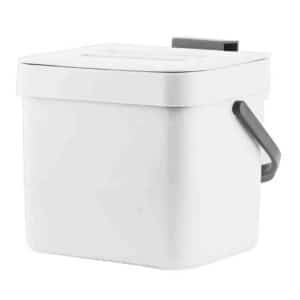
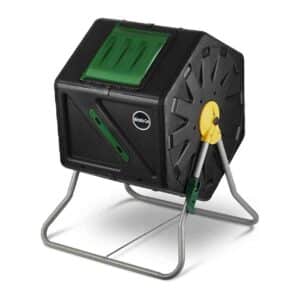
Some families don’t have the resources to compost and use it up themselves. If this is you, look into what your community offers for composting. Many have composting sites or take compost as a part of their waste management program.
Why your family should compost:
- Natural way to recycle food waste
- Helps create nutrient-rich soil
- Free soil
- A great learning experience for kids
For more information on composting, check out the EPA website: Composting at Home.
Picky Eaters and Food Waste
If you have a picky eater at home, you are probably very familiar with food waste, because it might seem like it happens every day, at every meal.
It can be extremely frustrating to put all that hard work into preparing a meal only for your child to flat-out refuse it. Sure some can be saved, but that still doesn’t make you feel any better about your child not eating.
However, I do challenge you to change your perspective just a little bit when it comes to food waste and your picky eater. I don’t want you to waste food, but I also don’t want you to force your child to eat food to reduce food waste.
So what do you do? Force your child to eat or throw their whole plate in the meal?
I’m not asking you to do either. Use the tips provided in this post to help reduce food waste to get you started.
Hear me out. We toss (or hopefully recycle) all their arts and crafts, but we don’t look at all the paper, crayons, markers, and paint as wasted. It’s helping them learn how to draw, write, and develop fine motor skills.
And what if instead of viewing the broccoli they didn’t eat at dinner as waste, we viewed it as something that is helping them learn how to like broccoli one day.
Simply being exposed to foods at mealtimes in a positive way without pressure to eat it (because that’s their decision) is progress for picky eaters.
The biggest thing for reducing food waste if you have a picky eater is to simply start with less. And I mean way less, even teeny tiny portions. Or instead of putting food on their plate that you know they don’t like, have them scoop it onto your plate (yes, that’s still helpful).
For more help with picky eating, check out these three simple tips.
Where to Start
We’re not going to go from almost 200 billion pounds of food waste a year to zero. Actually, zero food waste is unrealistic.
Don’t try to take on all these food waste-reducing tips all at once. Choose one to start with and go from there.
Reducing Food Waste at Home Tips:
- Only buy what you need
- Prep your produce
- Store foods properly
- Be flexible with expiration dates
- Talk to your kids about food waste
- Save what you can
- Embrace leftovers
- Compost
If you have a picky eat at home, I recommend starting with simply adjusting portion sizes. Even though it might sound silly, give them a teeny tiny piece of new or disliked foods.

